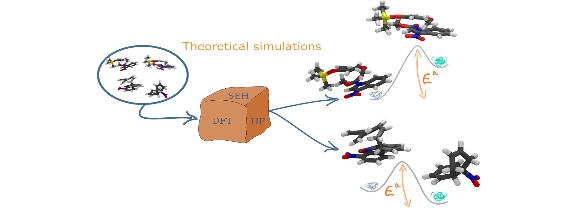Seminario Riccardo Spezia, "Theoretical Studies of Chemical Reactivity: Kinetics and Dynamics", Dip. Chimica

Mercoledì 17 aprile alle ore 14 in Aula II, edificio Cagliotti (CU032) avrà luogo il seminario:
Theoretical Studies of Chemical Reactivity: Kinetics and Dynamics
di Riccardo Spezia, Sorbonne Université, Paris, France
Abstract
In this seminar, we will present recent theoretical advances in studying the fundamental processes related to chemical reactivity. In particular, we will distinguish between approaches based on kinetics theory and how/when dynamical effects can modify the outcomes of kinetic theories. In particular, RRKM and Transition State Theories will be discussed and deviations from that examined. RRKM theory is typically used in the context of gas phase chemistry, and it can be used from molecular information as well as from chemical dynamics simulations. Deviations from this theory regard mainly non-equilibration of the reactant state and non-trivial post transition state dynamics. Chemical dynamics simulations are able to identify such effects leading to a better interpretation of experimental data. Transition State Theory has its ground in the canonical ensemble, which is the typical choice for solution chemistry. Direct dynamics can be used to confirm some of the assumptions of the theory and, eventually, to add corrections. In particular, a combined use of enhanced sampling methods (like Umbrella Sampling) and direct dynamics can shed light to the interplay between kinetics and dynamics. Finally, we will show the importance of considering nuclear quantum effects when studying reaction dynamics. At this end, we will discuss the use of Path Integral based molecular dynamics simulations.
References
1. A.Martin-Somer, M.Yanez, M.-P.Gaigeot and R.Spezia. J. Phys. Chem. A 118, 10882-10893 (2014).
2. A.Martin-Somer, M.Yanez, W.L.Hase, M.-P.Gaigeot and R.Spezia. J. Chem. Theory Comput. 12, 974- 982 (2016).
3. R.Spezia, A.Martin-Somer, V.Macaluso, Z.Homayoon, S.Pratihar and W.L.Hase. Faraday Discuss. 195, 599–618 (2016).
4. A.Martin-Somer, R.Spezia and M.Yanez. Phil. Trans. A 375, 20160196 (2017).
5. Y.Jeanvoine and R.Spezia. Theor. Chem. Acc. 138, 1 (2019).
6. A.Malik, R.Spezia and W.L.Hase. J. Am. Soc. Mass Spectrom. 32, 169-179 (2021).
7. A.F. Perez-Mellor and R. Spezia. J. Chem. Phys. 155, 124103 (2021).
8. F.Angiolari, S.Huppert and R.Spezia. Phys. Chem. Chem. Phys. 24, 29357-29370 (2022).
9. F.Angiolari, S.Huppert, F.Pietrucci and R.Spezia. J. Phys. Chem. Lett. 14, 5102–5108 (2023).
10. F.Angiolari, G.Mandelli, S.Huppert, C.Aieta and R.Spezia. Submitted. Preprint on ChemRXiv: https://10.26434/chemrxiv2024-wb68d.




